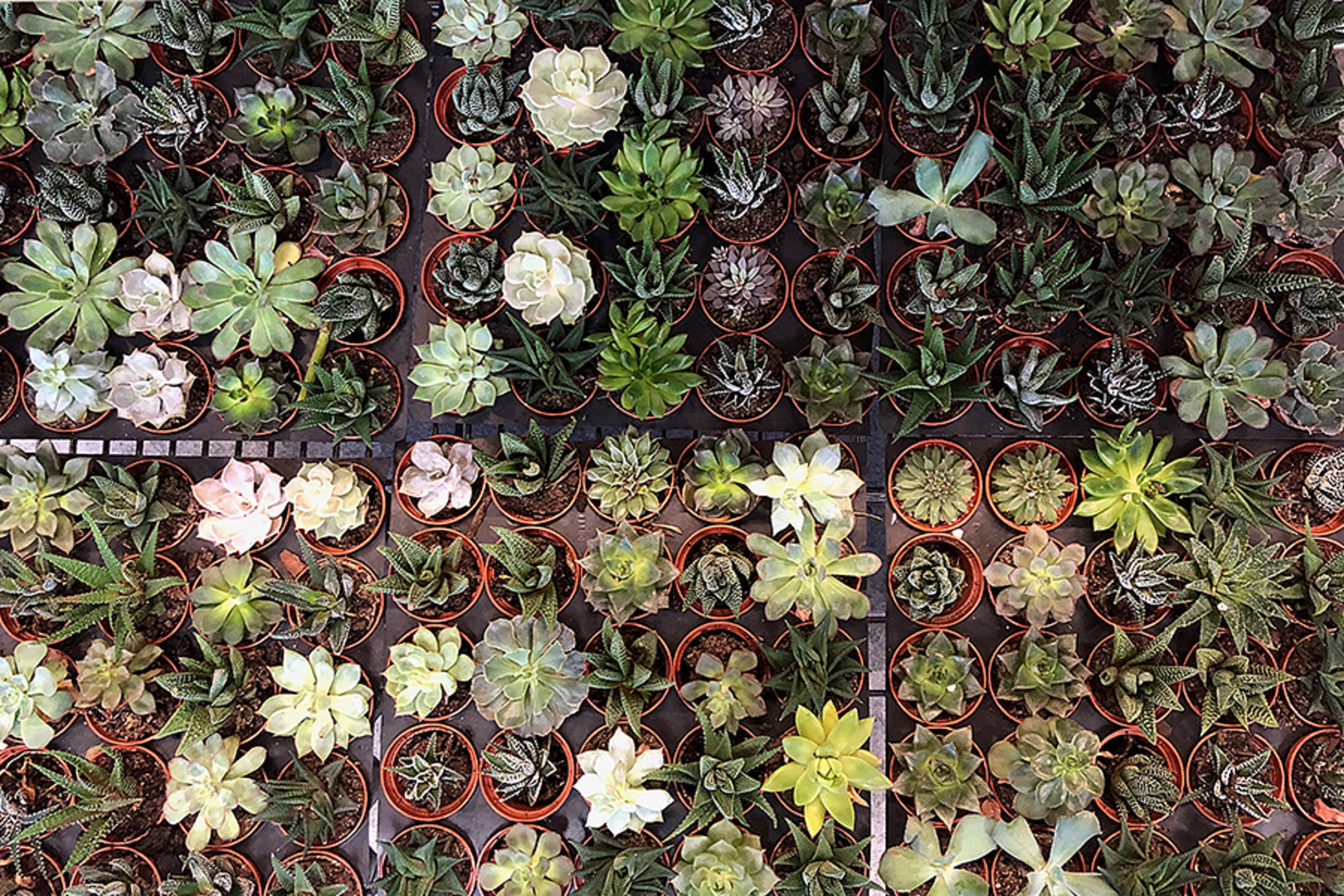How to Keep Your Succulents Alive and Thriving
These unique plants have become super popular recently — and for good reason.
Sep 28, 2020
Succulents are having a moment — and for good reason. From being able to grow just about anywhere to requiring little maintenance, these unique plants have a lot going for them. Such as...

6 reasons to love succulents
1. They can grow almost anywhere
Unlike most common houseplants, they're not as finicky about water and temperature.
2. They’re the perfect size for small space
You can tuck a little greenery into the corner, up on a shelf, or even on your desk.
3. They’re low maintenance
The biggest problem with succulents occurs when you try to “kill them with kindness.” These plants like to be pretty much left alone.
4. They’re unique
Succulents’ wide, smooth leaves and crisp shapes give them a decidedly modern appearance, making for a very chic presentation when lined up on a long table or clustered on a shelf. They’re even used as non-traditional wedding bouquets (just look up “succulent bouquet” on Instagram).
5. They can be therapeutic
From soothing a burn (aloe vera) to cleaning the air (snake plant), many succulents perform functions beyond just looking pretty on a shelf.
6. They make a great gift
Because of their attractive looks and low maintenance, succulents are ideal plants to gift. Even the most novice green thumb can keep them alive, and they do double duty as an accessory to any home décor.
But wait, what are succulents?
Succulents are any one of a family of drought-resistant plants that store water in their leaves, stems, or roots. They typically have leaves that are smooth and fleshy in appearance.
The most popular succulents include the aforementioned aloe vera and snake plant; other varieties include the jade plant, zebra plant, moonstones, and “hens and chicks.”
Prickly pear and purslane are examples of succulents that you can eat, and air plants (“tillandsia”), cacti, and sedum are all in the succulent family, too.
If we’ve piqued your interest and you’re ready to dive in, take a moment to familiarize yourself with the three basic areas of care that succulents need: soil, light, and water.
Succulent care tip No. 1: Plant your succulents in soil that drains
Succulents are meant to tolerate drought, and regular potting soil is designed to hold water and drain slowly. This can make succulents prone to root rot if they sit for a prolonged period of time in wet soil.
You can avoid root rot in one of two ways:
1. Purchase a soil mix designed specifically for cacti or succulents
These mixes are looser and more porous. They keep the plant stable in its container and hold in a little moisture while still draining thoroughly.
2. Amend a standard potting soil mix
The goal is to adjust the soil so that moisture exits the container quickly. You can make a better soil mix for succulents by adding coarse sand, perlite, pumice, coconut coir, and mineral grit, all of which help aerate the soil and increase drainage.
Succulent care tip No. 2: Give your succulents plenty of light
Succulents need light, and plenty of it. Ideally, they need six hours a day. If grown in too little light, the plants become leggy and the leaves tend to fade in color. You will also want to rotate your plants frequently, as they tend to “reach for” the light if left sitting in one spot without rotation.
Succulent care tip No. 3: Don’t overwater your succulents
We can’t emphasize this enough: Do not overwater your succulents. Remember, these are drought-tolerant plants, and are designed to withstand long dry spells in their native habitat.
A big part of successful watering has to do with the pot in which you plant your succulent. Terra cotta pots are ideal (especially if you’re just starting out on your succulent journey) because they dry out quickly and pull water away from the soil. Terra cotta is also a naturally “breathable” material, due to its porous properties.
While planter material like terra cotta helps, the most essential element is a drainage hole. Whether the planter comes with a pre-drilled hole or you drill one yourself, you want your succulent container to be able to drain out any excess water swiftly and completely.
How to water?
Simply add water to the soil until you see it come out of the drainage hole. Then leave it be. You won’t want to water again until the soil is dried out, which you can check by testing the top inch of soil. If it’s dry, it’s time to water. With succulents, less is more.
You can use any tool you like for watering, except for a spray bottle. Spray bottles only mist the surface, so water doesn’t get deep enough into the soil. This can result in plants with thin, shallow roots. Nice strong roots come from a deep and thorough watering. Spray bottles also tend to leave moisture on the leaves, which can result in mold growth. Stick to a pretty pitcher or watering can.









